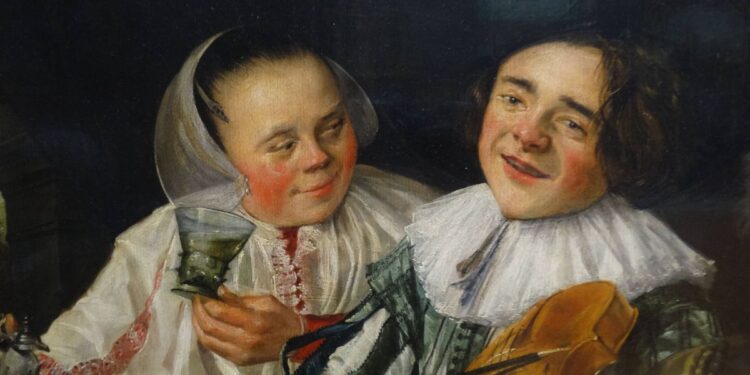Art history is filled with remarkable talents who have left an indelible mark on the world. One such luminary is Judith Leyster, a gifted artist from the 17th century Netherlands. Despite being overshadowed by her male contemporaries for centuries, Leyster’s artistic brilliance is now being rediscovered and celebrated. In this article, we delve into the life, works, and enduring legacy of this exceptional Dutch master.
Table of Contents
Early Life and Education
Judith Leyster was born on July 28, 1609, in Haarlem, a bustling center of artistic activity in the Dutch Republic. Little is known about her early life and upbringing, but it is believed that she came from a family of artists. Leyster’s father, Jan Willemsz, was a well-known brewer and amateur painter, while her mother, Trijn Jaspers, also dabbled in painting. Growing up surrounded by art, it was only natural for Leyster to develop a passion for painting from a young age.
Rising Star in Haarlem
As a teenager, Leyster began her artistic training under the tutelage of Frans Pietersz de Grebber, a prominent painter in Haarlem. She quickly displayed exceptional talent and was admitted as a member of the Guild of St. Luke, a prestigious painters’ guild, at the age of 24. This recognition was a significant achievement for a female artist in the male-dominated art world of the 17th century.
Style and Influences
Judith Leyster’s style was heavily influenced by her contemporary, Frans Hals, a renowned portraitist. Like Hals, she excelled at capturing the vibrant essence of her subjects through loose brushwork and a keen eye for detail. Leyster’s paintings often depicted scenes of daily life, including lively tavern scenes, intimate family portraits, and genre paintings. Her use of light and shadow, combined with rich colors, added depth and realism to her artworks.
Impact and Recognition
During her relatively short career, Leyster achieved considerable success and garnered recognition both within and outside of Haarlem. She ran a thriving workshop, attracting students and aspiring artists who admired her skills. Her paintings were highly sought after, and she received commissions from prominent patrons, including the Dutch royal family. Leyster’s work was widely acclaimed for its originality, technical prowess, and ability to capture the spirit of her subjects.
Temporary Obscurity and Rediscovery
Despite her success during her lifetime, Judith Leyster’s artistic legacy was overshadowed by historical circumstances and the prevailing biases against women artists. After her death in 1660, her works fell into obscurity, often misattributed to other artists. It wasn’t until the late 19th century that art historians began to rediscover and attribute her paintings correctly. Since then, her oeuvre has been meticulously studied, and Leyster has rightfully reclaimed her place as a significant figure in Dutch art history.
Legacy and Influence
Judith Leyster’s contributions to the art world extend far beyond her individual works. Her achievements as a female artist in the 17th century paved the way for future generations of women artists, challenging societal norms and expectations. Her ability to portray everyday life with authenticity and charm continues to inspire artists and art enthusiasts worldwide. Leyster’s paintings can be found in prestigious museums and private collections around the world, reminding us of her enduring artistic brilliance.
Conclusion
Judith Leyster, the 17th-century Dutch master, captivated audiences with her exceptional talent and artistic vision. Although her brilliance was overshadowed for centuries, her works now receive the recognition they deserve. Leyster’s ability to breathe life into her subjects and her pioneering role as a female artist make her a truly remarkable figure in art history. Her legacy serves as an inspiration to all aspiring artists and a testament to the enduring power of artistic expression.
FAQs
- Q: What were Judith Leyster’s most famous paintings?
- A: Some of Judith Leyster’s most famous paintings include “The Proposition,” “The Happy Couple,” and “Self-Portrait.”
- Q: How did Judith Leyster challenge gender norms in the art world?
- A: Leyster’s success as a female artist in a male-dominated field challenged societal norms and expectations, opening doors for future generations of women artists.
- Q: Where can I see Judith Leyster’s paintings today?
- A: Judith Leyster’s paintings can be found in renowned museums such as the Rijksmuseum in Amsterdam, the National Gallery of Art in Washington, D.C., and the Louvre Museum in Paris.
- Q: What is Judith Leyster’s artistic style known for?
- A: Leyster’s artistic style is characterized by loose brushwork, vibrant colors, and a keen attention to detail, particularly in her genre scenes and portraits.
- Q: How did Judith Leyster’s rediscovery impact the art world?
- A: Judith Leyster’s rediscovery brought attention to her unique artistic contributions and challenged the prevailing biases against women artists, fostering a greater appreciation for their work.




